Wii U vs. Wii: Are their games REALLY that different? And if not, which one does them better?
Is the Wii U is really a new direction, or just an HD reiteration of its predecessor? Let the games speak!
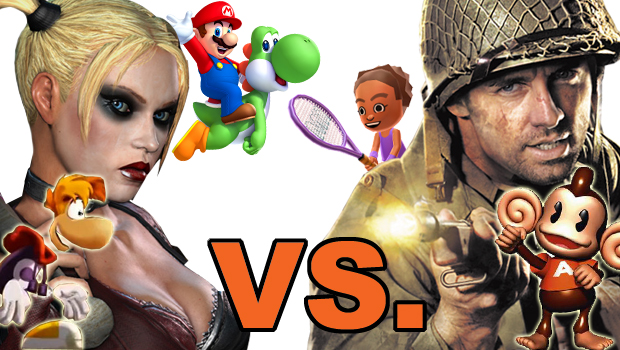
For a large proportion of the last year, the more hopeful hardcore have been operating under the belief that the Wii U is a completely different kind of console to the Wii. We've been working on the assumption, cultivated by Nintendo, that the Wii's successor would be much more similar in culture to the Nintendo machines of old. Goodbye casual party crap, hello AAA good-times. But the thing is, despite the extra horsepower, I don't think the two machines currently are too dissimilar if you look at their respective early game line-ups.
In fact having played a bunch of the Wii U's early games, I've spotted quite a few parallels between the two. Some are obvious, some are slightly more abstract, but there are certain game types and demographic-baiters that blatantly crop up in both launch-window line-ups. So much so, that I decided to make a comparison feature out of them, so that I could answer the most important question here.
Is the Wii U a real change for Nintendo, or an HD reiteration of the Wii? And if it's the latter, is it significantly better?
The gimmicky exclusive Ubisoft FPS
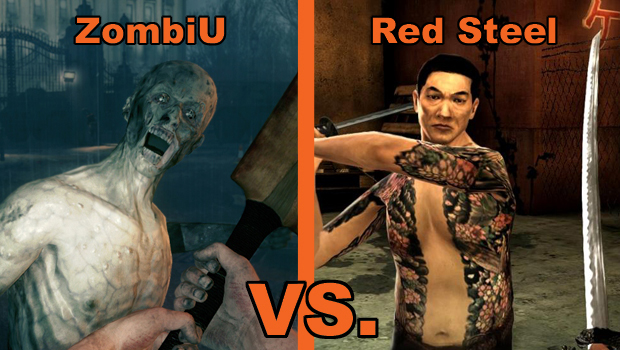
Theyre the same because: Both are from Ubisoft. Both are exclusive, original FPS. Both are designed to make heavy use of the consoles unique controller functionality.
But which Wii does it better? The Wii U. Easily. Although ZombiU, going off the demo Ive played thus far, anyway, doesnt entirely feel like a bona fide mega-ton system-seller in its own right, it does play like a thoroughly solid, enjoyable, and refreshingly survival-driven horror game, lifted above the mire by some smart and actually well thought-out Gamepad functionality.
While I did come away with the impression that the tension-building stuff on the second screen which forces you to look away from the main game view when managing inventory or picking locks etc., while the game-world rolls on irrespective of your distraction wasnt really anything I couldnt, or in fact hadnt, experienced before with traditional video game interfaces (Hello Dead Space and Deus Ex: HR), it all felt complete and cohesive, like a properly designed game rather than a launch window novelty rush job.
Which is, you know, the opposite of how Red Steel felt.
Sign up to the GamesRadar+ Newsletter
Weekly digests, tales from the communities you love, and more
Stupid, sluggish, broken-controlled, ugly-as-a-burst-bag-of-offal Red Steel. Away with you.
The 'unique' version of a multiformat megaton
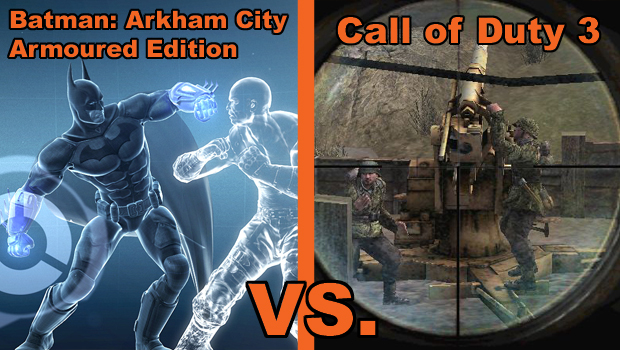
Theyre the same because: Theyre the gimmicked-up Nintendo versions of a big-name AAA third-party hit available in its natural form on the two rival consoles.
But which Wii does it better? Tricky to tell at the min, but probably the Wii U, if only by grace of its version of the game actually appearing on hardware comparable to that running the two rival versions. Okay, Ive hinted (because its true) that Arkham City on the Wii U currently looks more than a little ropey in the textures department at the moment, but Im going to put that down to early preview code rather than genuine trouble with the port until I know otherwise. And however sketchy it might look, the difference is nothing the polished marble vs. LEGO comparison between 360/PS3 CoD3 and the Wii version.
As for the inevitable gimmicks, Id say that both games feel on a par at the moment. Where CoD forced us to use Wiimote gestures (read: flailing and screaming and air-punching at the TV in an attempt to plant explosives and melee bad guys when a simple button-press would have done), Batman now uses touch-screen menus to needlessly add extra input layers to gadget selection when a simple button-press would have done. And it also, rather moronically, switches the follow-camera on the remote-controlled Batarang to the Gamepad screen as soon as the thing leaves Bats hand.
Why, Rocksteady? Why does it do this? I do not want it to do this.
The mini-game tech demo
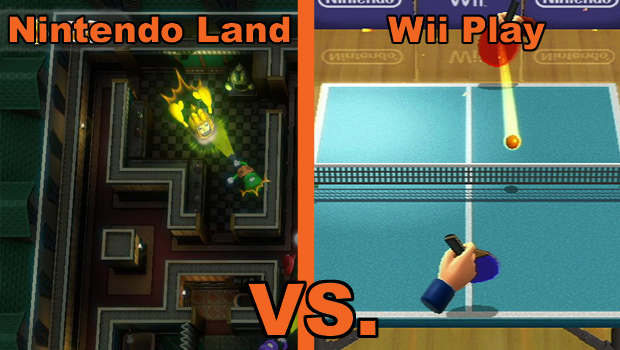
Theyre the same because: Theyre both eclectic mini-game collections intended to showcase their respective consoles controllers, while also (theoretically) inciting a culture of local multiplayer fun-times.
But which Wii does it better? Going off current evidence, its definitely the Wii U. The reason? Nintendo Land is deceptively deep, nuanced and reveals further gameplay rewards with each and every round. Of which you will play many, because at its best Nintendo Land has a higher one more go factor than methadone. Wii Play (which was a launch title in most regions) however, is as shallow as a puddle that exists within a two-dimensional universe, reflected in the surface of another puddle that also resides there.
I could explain Nintendo Lands captivating multiplayer-Metal-Gear shenanigans (by way of Luigis Ghost Mansion) and fiendishly fast, tactical spatial and inventory management (by way of Animal Crossing: Sweet Day) here, but instead Ill direct you to my recent feature on the best bit about the Wii U isnt the thing youve been getting excited about.
Spoiler: Its the local multiplayer. That's the best bit. Further spoiler: Thats the stuff that Nintendo Land is made out of.
The bonkers Japanese third-party one
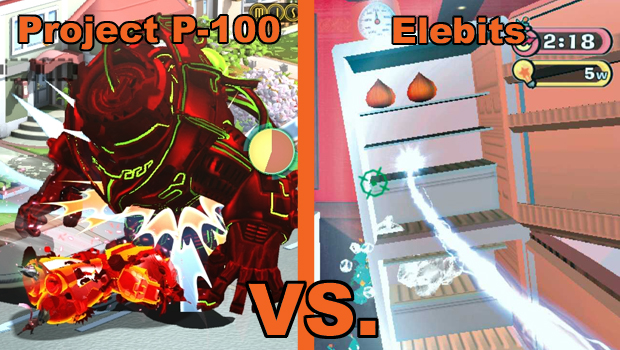
Theyre the same because: Theyre both mental, unexpected Japanese third-party games that, while not part of the top tier of releases, are mighty exciting by way of developer heritage, fresh, anarchic concept, and flat-out fun, accessible, dayglow gameplay. Oh, and both involve throwing around big piles of small, cartoony folk that arent Pikmin.
But which Wii does it better? The Wii U again, I reckon. Elebits was a fun, physics-driven hide-and-seek wreck em up that made good use of the original Wiis control set-up, but as with many launch period Wii games it felt a bit like a motion-control prototype rather than a fully-fleshed game. The bits of Platinums Project P-100 Ive played so far have a similarly light feel to them, but they feel more like a game designed as a game in its own right, with touch-screen gameplay so far being largely optional.
Controlling your mob of volunteer superheroes as they run, swarm, turn into weapons, and combine to overcome obstacles can most easily be done with simple analogue stick commands (a bit like performing Street Fighter special moves, only a lot slower), with only a single dual-perspective puzzle pushing the Gamepad to the fore. Thus, Project P-100 is far more an already-decent game with innovative bits rather than one defined by the need to show off innovative bits. Plus, it has Platinums DNA running right through it, from the Bayonetta-lite combat animations to the could-have-been-lifted-from-Viewtiful-Joe presentation. So thats nice.
The crowd-pleasing first-party core one
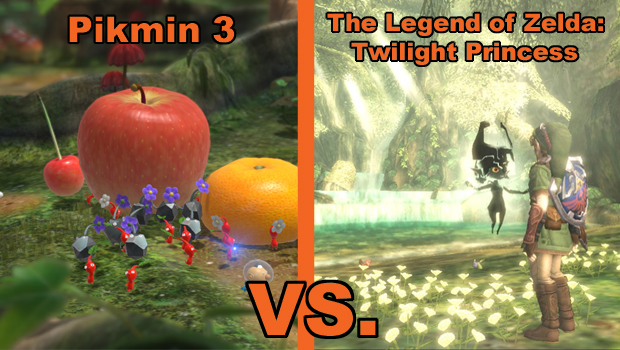
Theyre the same because: Theyre the visually astounding new iterations of long, standing, much-loved, hardcore Nintendo franchises.
But which Wii does it better?So far Id say its a tie. Cards on the table: I loved Twilight Princess. Way more than a lot of people did. Many moaned that it was just more of the same but prettier, but I found it to be anything but. For me, that moment came with Wind Waker. As brilliant as it was, I was just so sick to death of the recycled Zelda formula by the cel-shaded edition came along that I couldnt get through it.
Twilight Princess though, brought a much more mature, true RPG feel, if not through the gameplay then through putting its more serious, genuinely emotional story to the fore. Also, it had a look, feel and ambience unlike any other Zelda game before it. Yes, it was a Gamecube game with tacked-on motion controls, but for me they absolutely worked, adding a whole extra level of immersion that complimented all of the other additions beautifully.
Pikmin 3, while it looks superficially similar to Pikmin 2, is actually a definite step forward. Again, the addition of Wiimote-driven controls make it a much more flowing, instinctive game to play, and the new content (wall-smashing rock Pikmin, a bunch of other unconfirmed types, management of four different Pikmin forces at the same time) is absolutely a worthwhile upgrade.
That said, Pikmin is a second-tier Nintendo franchise and so less likely to be quite as big a deal (or as nourishing a single-player experience) as the inevitable Wii U Zelda (whenever that turns up). But yeah, well put these two on an even keel for now. Because even second-tier hardcore Nintendo is hardcore Nintendo.
ie. Better than most other things in the world.
The engaging-but-silly, get-everyone-round-the-TV one
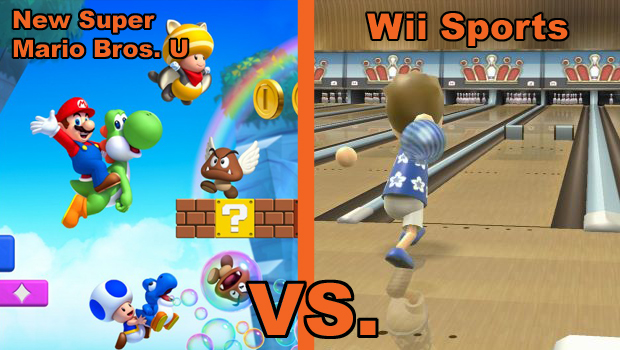
Theyre the same because: While not exactly vast narrative epics, theyre both certainly far from shallow mini-game collections, and both have been designed with the explicit intention of encouraging local multiplayer, either co-operatively or competitively.
But which Wii does it better? At the moment Im going to say the original Wii. Basically because I hate New Super Mario Bros. multiplayer. For me, NSMBWii (and by definition NSMBU) are a case of shoe-horning casual party fun into a franchise that cant take it, resulting in a pretty unsatisfying result whichever direction you come at the game from. Its basically just too much of a random clusterf*ck to be anything like enjoyable.
Wii Sports however, while initially appearing shallow, has oodles of depth if you really start experimenting with the control nuances, even without Wii MotionPlus. For me theres just way more replay value in Wii Sports strongest events, and more fun to be had, than I get from anarchically romping through a sparsely designed Mario level and dying at random through no fault of my own.
The third-party franchise with a new multiplayer focus
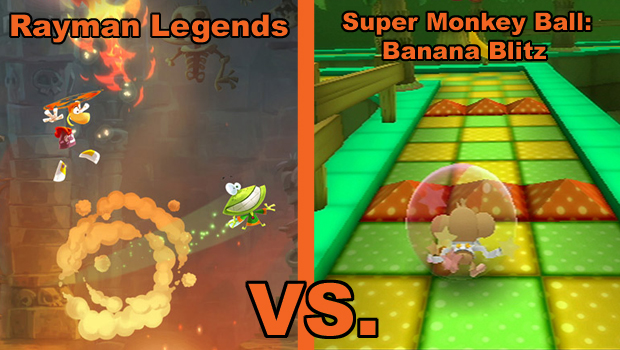
Theyre the same because: Both are new entries in successful third-party franchises that, while they look a bit on the family-friendly side, are actually pretty damn hardcore. Also, both look pretty similar to their previous iterations, but are actually doing something meaningfully new with the hardware.
Okay, I'll admit it, this one's a bit tenuous. To be honest I just wanted to bang on about Rayman being great again, and Monkey Ball was the nearest fit I could shoe-horn together. What are you going to do about it?
But which Wii does it better? The Wii U. Definitely. As I explained in that aforementioned 'The best bit about the Wii U isnt the thing youve been getting excited about' feature, Rayman's facility to allow one player to control and edit the level and its hazards while the others platform through them is a spellbinding bit of multiplayer design. The sense of camaraderie, competition, and even shared creativity is intoxicating, and when all the players are flowing in unison, there's a satisfying co-operative thrill that rivals anything in gaming.
Whereas Monkey Ball just stapled 50 multiplayer mini-games to the disc and used waggle controls instead of analogue sticks. Look, what do you want from me here? I explained the situation. Rayman. It's great. Be excited.
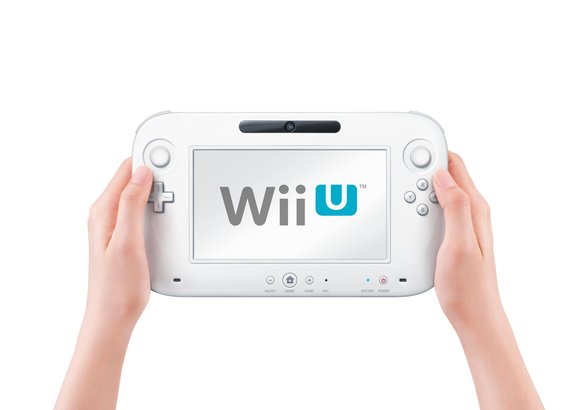
So, conclusions? While we're still at a fairly early stage with the Wii U, based on my time with some of the more significant games in its launch window line-up I'd say that its early life isn't going to be too different - culturally at least - to that of the Wii. That said, the overall quality of the Wii U's line-up is way beyond that of its predecessor's.
Obviously deciding the real shape of the Wii U will have to wait until we've played the launch line-up more intensively and have a better idea of the full array of first and third-party games coming out, but for now, feel good about things. It might not currently be the hardcore gaming monster you thought it might be, but after Nintendo's last home console, the Wii U is one hell of a big step in the right direction.



